#felids
Text

Scottish Wildcat and Scottish Wildkittens. Once widespread across Great Britain, this population of European wildcats is now only found in northern and eastern Scotland. They’re threatened by habitat loss, hunting, and hybridized with domestic cats.
This is gonna be the postcard for February’s Creature Mail!
[ID: an illustration of a serious-looking wildcat on a fallen log. Two kittens are cuddling in the crook of a branch below her. The background is a field at night, with snow falling. End.]
1K notes
·
View notes
Text
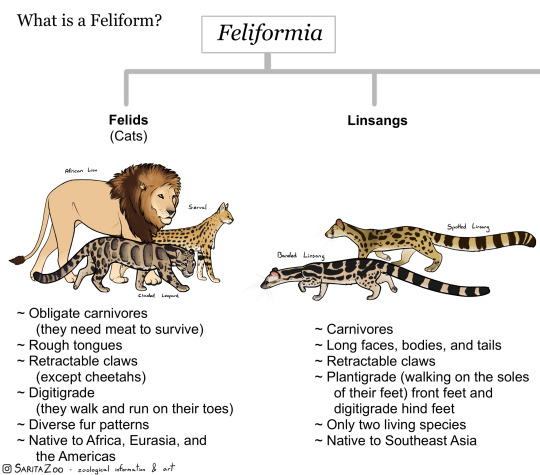



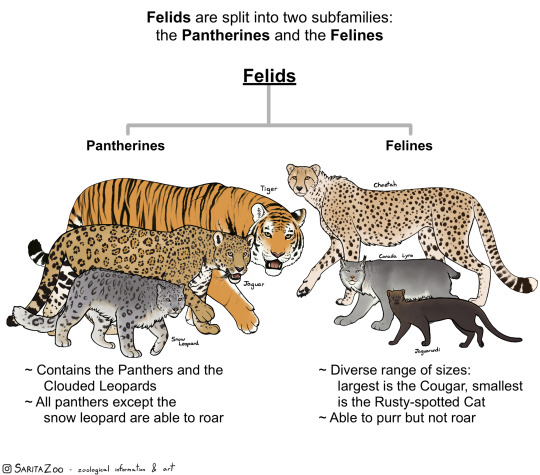
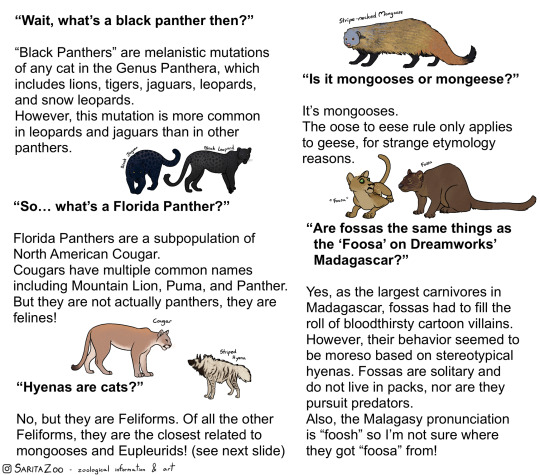

My first big project for my new Instagram account: SaritaZoo
#it took over a month cause of all the dang spots#and to think I wanted to add extinct families too#my art#SaritaZoo#Feliformia#Feliforms#Felids#Cats#Linsangs#Viverrids#African Palm Civet#euplerids#mongooses#hyenas#mammals
789 notes
·
View notes
Text

Mrrrrrrp mrrp mew mrow meow!!
[ID: an illustration of a black cat sitting on an orange background with some grasses. It is holding a mouse in its mouth and looking very pleased with itself. End.]
381 notes
·
View notes
Text
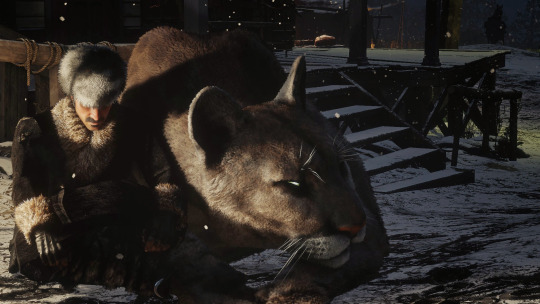
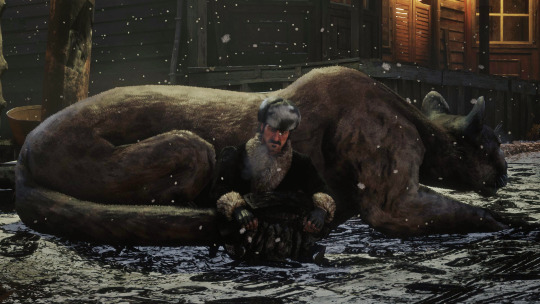


Dutch met up with another big cat (who took some pity on him) and they had a lil nap together 😻
(I swear they had no involvement with the corpses in the background)
Sequel!
#rdr2#red dead redemption 2#red dead redemption two#dutch van der linde#van der linde gang#Valentine#florida panther#cat#cats#feline#felines#felid#felids#rdr2 photography#red dead redemption 2 photography#rdr2 community
29 notes
·
View notes
Text
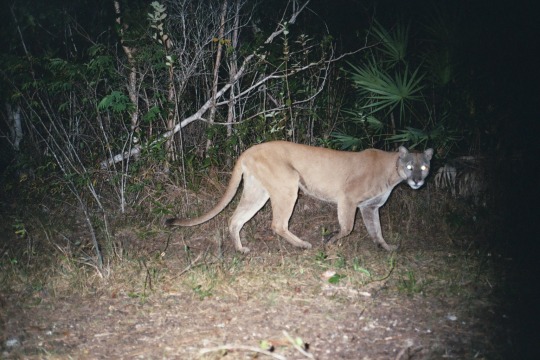
Photograph of Florida panther taken by a remote camera at night during the week of January 21-30, 2004.
21 notes
·
View notes
Photo

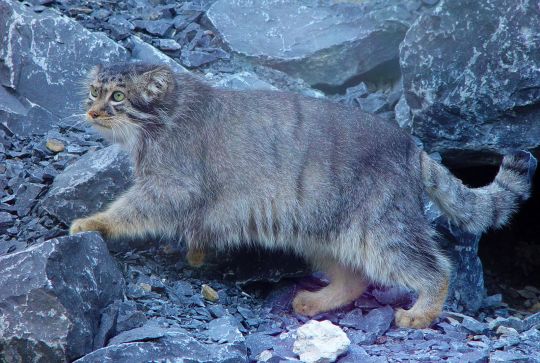

A Friend: The Pallus Cat
The pallus cat (Felis manul), originally known as the manul in Mongolia, is a species of small wild cat endemic to Central Asia. Their range is restricted to by their primary prey, pika (Ochotona sp.). These rodents only live in grasslands or rocky steppes, and so while the pallus cat may occasionally indulge in other rodents or small birds if they can catch them, they rely on the pika and thus almost exclusively live in rocky steppes or lowland areas up to an altitude of 4,800m. As predators themselves, F. manul face few natural threats, though large eagles and red foxes occasionally prey on kittens.
The body of the manul is round, exaggerated by its long, dense fur. In fact, F. manul has the longest, densest fur of any cat: hair on their back can grow to be 7cm in length, and some parts of the body have up to 9,000 hairs/cm2. All this serves to keep this species warm in central Asia’s frigid winters. Their fur is usually gray, with darker gray or light gold accents. Another exageratting feature of the pallas cat is its tail; the pallas cat’s total length is about 90cm, but their tail accounts for about a third of that length. Generally they don’t weigh much more than a house cat, at 2-5kg, despite their rotund appearance. However, one way to distinguish the pallas cat from house cats (and most other feline species) is that the pallas cat’s pupils contract in small circles, rather than slits.
Little is known about F. manul’s behavior, as they are both incredibly rare and extremely solitary. They are active mainly at night, and likely spend most of their time hunting. During the day, individuals seek shelter in caves and rocky crevices, or the abandoned dens of other animals if no other suitable shelter is available. Individuals maintain large territories, ranging from 20.9 to 207.0 km2. Usually one male’s territory will overlap or encompass that of several females, though they don’t interact outside mating.
Breeding only occurs once a year, and in a very short window as females are only reproductively receptive for about 3 days. Males become aggressive and territorial at the start of the breeding season, towards the end of winter, and mark areas with their scent to attract females. After mating, males and females go their separate ways. Pregnancies last 66-75 days, and mothers give birth to a litter of 3-6 kittens sometime between April and May. These kittens are initially blind and deaf, though they gain full senses and motor control after about a month. F. manul young start hunting when they’re only 5 months old, and become fully independent and sexually mature by the time they’re a year. The average lifespan is about 11-12 years.
Conservation status: Because they are hard to study in the wild, it’s difficult to make estimates about their population size. The IUCN ranks the pallas cat as Near Threatened, due to past hunting practices that targeted F. manul for its fur. Though hunting has been outlawed in Mongolia and China, the decline of pika due to rodent control measures is a serious threat to the pallas cat’s food source.
If you like what I do, consider buying me a ko-fi!
Photos
Steven Ross
Shanyuan Li (this photo actually won Wildlife Photographer of the year in 2020)
Karin Sturzenegger
#pallas cat#carnivora#felidae#small cats#felids#felines#cats#carnivores#mammals#grasslands#grassland mammals#mountains#mountain mammals#asia#central asia#animal facts#biology#zoology
263 notes
·
View notes
Text
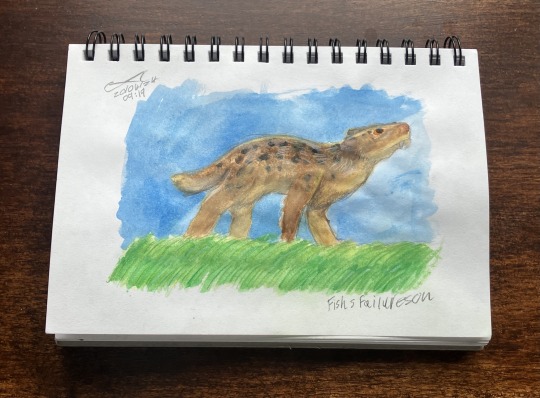
Messing around with watercolours and coloured pencils. Creature is Homotherium.
#art#my art#traditional art#watercolour#mixed media#<- kinda#paleoart#paleontology#palaeoblr#synapsids#mammals#carnivorans#felids#cats#homotherium#queue
7 notes
·
View notes
Text

my favorite cat that’s bad at being a cat
32 notes
·
View notes
Text

I found a really cool book at my university's library and decided to do an study of this beast that was in one page (photo is by Gerald Hinde, according to the book's cover).
The book is titled Cats of Africa: behaviour, ecology and conservation, by Luke Hunter.
ID: a drawing of a caracal looking up with its mouth open, its only shown from the neck and up. The lineart of the drawing was made in a notebook, and the drawing was later scanned and colored digitally. The background is completely green. End ID.
#i couldnt finish reading it before summer break but im so gonna borrow it when i come back >:]#i didnt borrow it for the break because it is too big and it could be damaged while i moved#irbis draws#animal art#animals#animal artist#art#caracal#felidae#felids#felines#mammals#animal illustration
24 notes
·
View notes
Photo

Cat Logic
86 notes
·
View notes
Text
Cheetah
AKA: spotted one (indian original name)
Acinonyx jubatus
Felidae family, acinonyx genus

Ultimate Infodump Sheet
General description
Cheetahs have pale yellow, grayish or fawn coats, covered in tiny black spots. The belly fur is lighter than the rest, while the color tends to darken on the back. Cheetahs have distinctive markins under the eyes that go down the muzzle, called a tear mask. They have black rings around the last third of the tail.
The cheetah's paws are long and narrow. They have semi-retractile claws on the front paws, and non-retractile claws on the hind paws.
Cheetahs' head-body length ranges from 112 to 150 cm (44 to 59"), and they are 67 to 94 cm (26 to 37") tall at the shoulder. Cheetahs weight between 21 and 72 kg (46 to 158 lbs). Males are usually larger than females.
They live 6 years on average in the wild, and 19 in captivity.


King cheetahs
The patterns of a king cheetah are caused by a slight melanism. Overall, the spots are bolder, sometimes even forming stripes. They have large stripes along the entierty of thair back, and rings are present on most of the tail.

Physical aptitudes
Cheetahs are the fastest land animal. The highest speed recorded for a cheetah was 113 km/h (70 mi/h). They are the only big cat able to turn in the air while sprinting. They use their tail for steering while they are running. They are bad tree climbers.
Contrary to members of the panthera genus, they do not roar: instead, cheetahs can purr, meow, chirp and yeep.
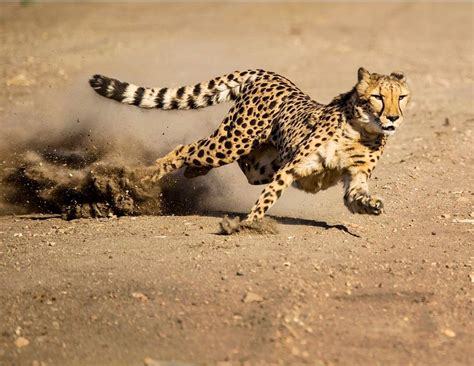
Habitat
Cheetahs live in savanna, shrublands, grasslands, wetalands, rocky areas, and in the desert. Due to their light weight, they are capable of living in dunes.
Cheetahs present in several small areas of Africa, in countries such as Algeria, Angola, Benin, Ethiopia, Tanzania, Uganda... They are extint on an alarmingly large portion of Africa.


Diet
Cheetahs are carnivorous. Their diet includes gazelles (especially the Thompson's gazelle), impalas, as well as other small ungulates. They also prey on hares, birds, and other small animals.
Cheetahs charge from 70 to 100 meters (27 to 40 feet) away from the prey. They strangle the animal with their jaws. The chase can only last 500 meters (196 feet), and cheetahs can only maintain their top velocity for a few hundred meters.
Contrary to most felids, cheetahs are diurnal and hunt primarily during the day.

Reproduction
Cheetahs reproduce year-long, but mostly during wet season. Makes provide no parental care, and only interact with females during mating. If the female encounters a coalition, she will most likely reproduce with several males.
Gestation lasts between 90 and 95 days (about 3 months). Cubs open their eyes 4 to 11 days after birth, and start walking after 12 days. The litter size in the wild is 1 to 6 cubs, with an average of 3. In captivity, litters with 8 cubs have been recorded. Cubs are weaned between 3 and 6 months, and become independent between 15 and 17 months.
Cheetah cubs have a long, blue-ish gray mane along their head, neck and back, called "mantle". They gradually lose this fur until they reach adolescence. A study suggests that the mantle makes cubs ressemble honey badgers, which aids them to survive as a lot of animals avoid honey badgers.
Predation is the highest on cheetah cubs. The survival rate in Serengeti National Park, where several large carnivores live, is of only 17%.

Endangered
Cheetahs are classified as vulnerable in the IUCN Redlist. The population is fragmented and keeps on decreasing.
The causes are all human: climate change, energy production and mining, urban development, agriculture, roads, hunting, human intrusion, modification of natural systems, invasive species....

Extra links
An interesting, well illustrated informational website that I wish I'd found earlier in writing this
Amazing footage of a cheetah hunting a wildebeest
SOURCES
6 notes
·
View notes
Text

Caracal! It leaps up to 10 feet to catch birds!
[ID: an illustration of an orange cat with long black ear tufts crouching on a branch. It is facing to the right and is on a blue background. End.]
260 notes
·
View notes
Photo
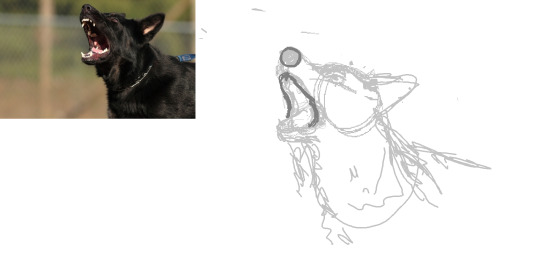
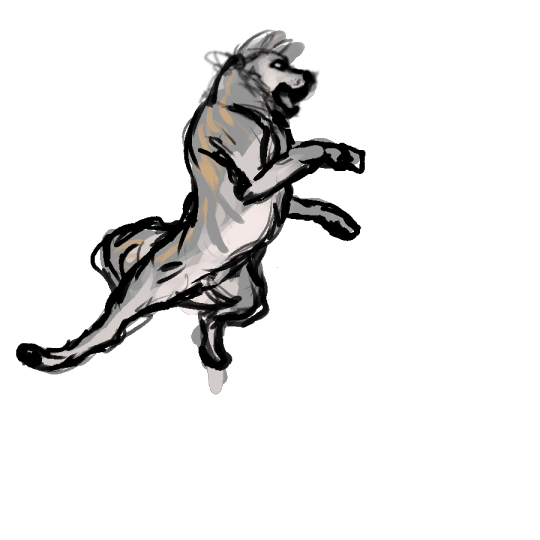
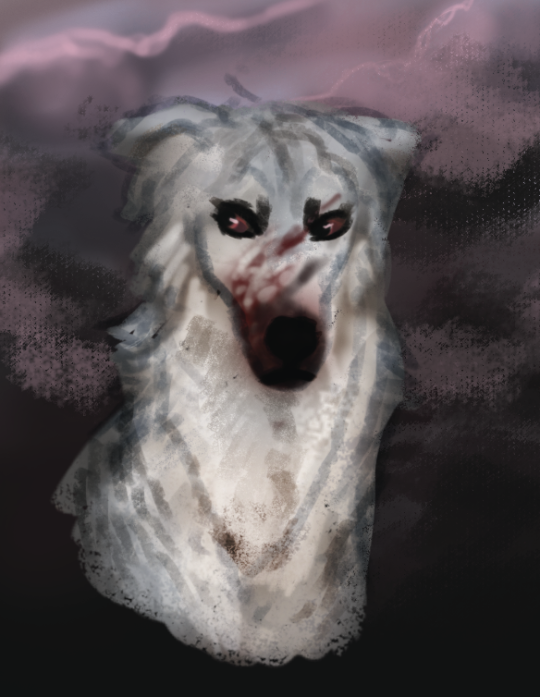

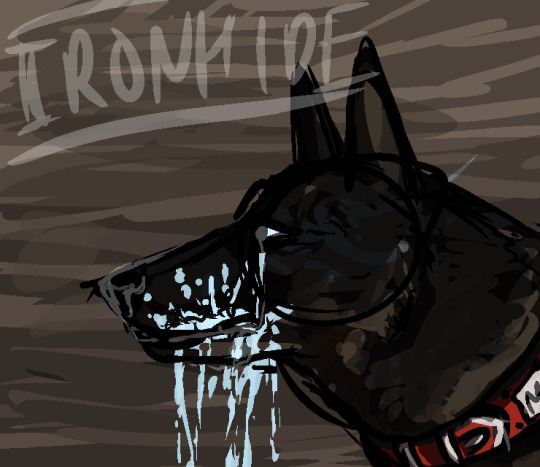

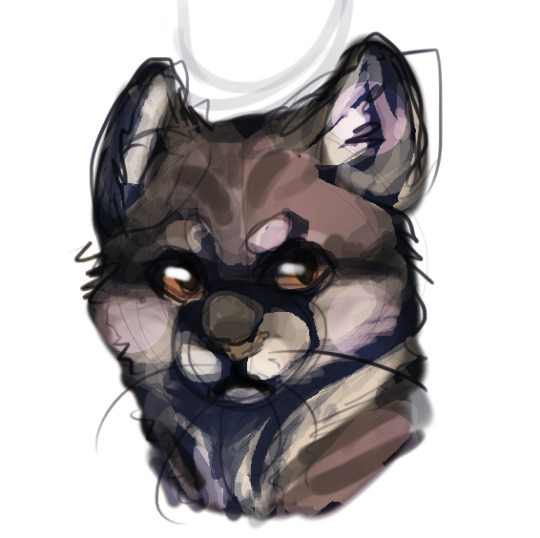
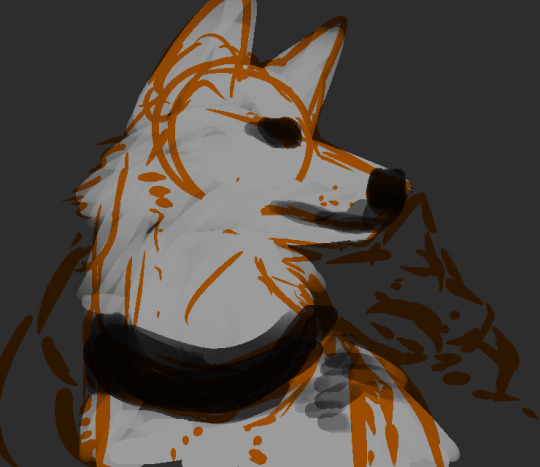
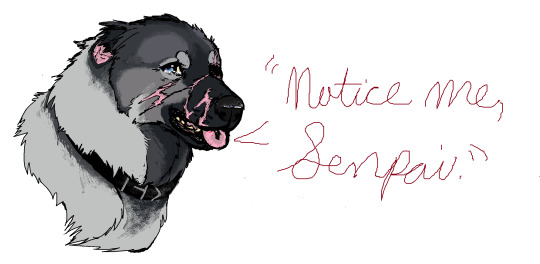
Dogformers dump, c. 2015 Characters are Soundwave, Optimus, Starscream, Breakdown, Ironhide, Megatronus, Orion Pax, Raf, Smokescreen, and Megatronus again (cursed).
#maccadam#dogformers#transformers#transformers prime#bayverse#tf#tfp#tyran#raf esquivel#megatronus#smokescreen#ironhide#orion pax#starscream#optimus prime#soundwave#dogs#canines#canids#felids#carnivorans#mammals#animals#vertebrates#felines#cats#my art tag (abandon all hope ye who enter here)#my designs#my verses#breakdown
39 notes
·
View notes
Text
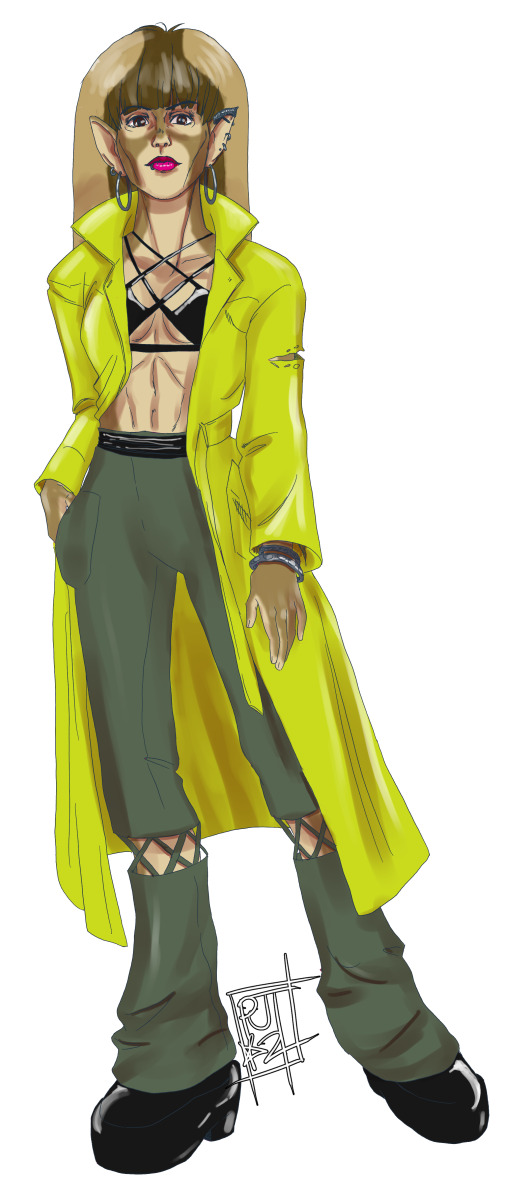
took nearly a year but I finally got another Felid done. this is Sphinx, who is a lion and had a full costume redesign for this. her coat is not inspired by Jubilee, but by the fact that her original costume as all yellow with black boots. CSP, used a Micron-style pen for inking.
#my art#complete#felids#homo felidae#sphynx#original character#her piercings were heavily inspired by noiz#i should have given her more jewelry but i was tired
2 notes
·
View notes
Text

my brain just CANNOT accept that weasels and mongooses aren't more closely related. the mongoose is an honorary weasel in my heart <3 or the weasel is an honorary mongoose?
here's my vision: we all know cats are liquid. well, weasels are simply too liquid to be caniformia. weasel = cat. weasel = mongoose.
this is a shitpost I promise I do understand that family trees are based on genetics not morphology
5 notes
·
View notes
